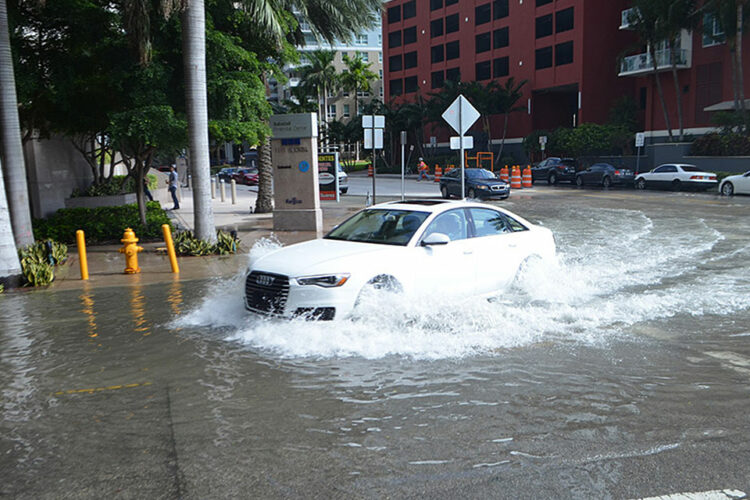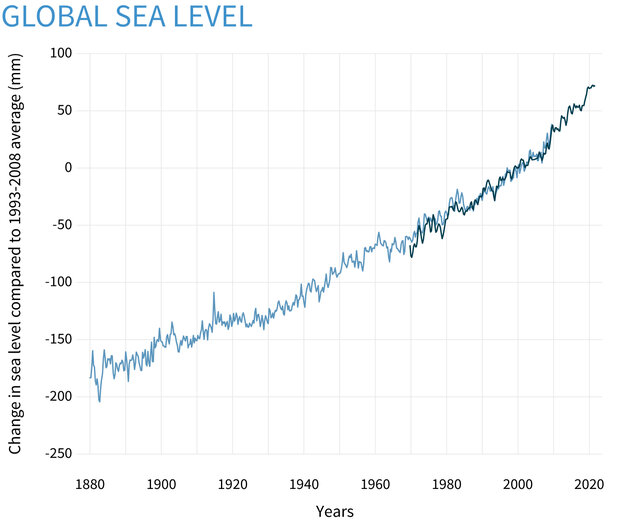
NOAA photo; Flooding in Miami
Feb. 18. By Dave Yochum. The United States is expected to experience as much sea level rise in the next 30 years as it has in the past 100 years, meaning coastal flooding in the Carolinas will be a more frequent event.
The Sea Level Rise Technical Report from the National Oceanic and Atmospheric Administration projects sea levels along the coastline will rise an additional 10-12 inches by 2050.
“Major” flooding is expected to occur five times as often in 2050 as it does today.
Economic impact
Higher sea levels can affect everything from coastal fisheries to real estate.
Indeed, a study by the National Bureau of Economic Research said property sales in Florida census tracts that were most exposed to sea level increase declined after 2013 relative to sales in less-exposed areas. Prices tended to fall later; by 2020, prices in these markets were 5 to 10 percent below trend.
In the United States alone, $300 billion in “shoreline armoring” costs are forecast by 2100, according to a 2021 article in the Proceedings of the National Academy of Sciences.
Not affected: Lake Norman
Sea level rise leads to increased coastal flooding, even in the absence of heavy rain or storms, perhaps making Lake Norman—aka The Inland Sea—more appealing long-term than some of the most popular coastal towns from the Jersey Shore to Savannah.
“This new data on sea rise is the latest reconfirmation that our climate crisis…is blinking ‘code red,’” said Gina McCarthy, National Climate Advisor.

Source: NOAA
She said redoubling efforts to cut the greenhouse gases will help our coastal communities.
Two feet by 2100
At least two feet of sea level rise is likely by 2100.
“By 2050, moderate flooding — which is typically disruptive and damaging by today’s weather, sea level and infrastructure standards — is expected to occur more than 10 times as often as it does today,” said Nicole LeBoeuf, NOAA National Ocean Service Director. “These numbers mean a change from a single event every 2-5 years to multiple events each year, in some places.”
NOAA says local sea level changes may be more or less than the global average, based on:
—Changes in land elevation, such as subsidence resulting from sediment compaction or extraction of ground water and fossil fuels, and glacial isostatic adjustment where the land continues to rebound after the last ice age.
—Changes in gravitational forces, such as when mountain glaciers, ice caps and ice sheets in Greenland and Antarctica melt. They transfer the mass of their water to the ocean. As these areas lose their mass, their gravitational pull on the ocean weakens. Sea level in close proximity drops and rises further away as water flows from where it was once held.
—Changes in ocean circulation, such as when ocean currents are driven by the force of the wind and the different densities of water masses, based on their temperature and salinity. Locally, changes in these currents can cause more water to build up next to the land, raising sea level.

Discussion
No comments yet.